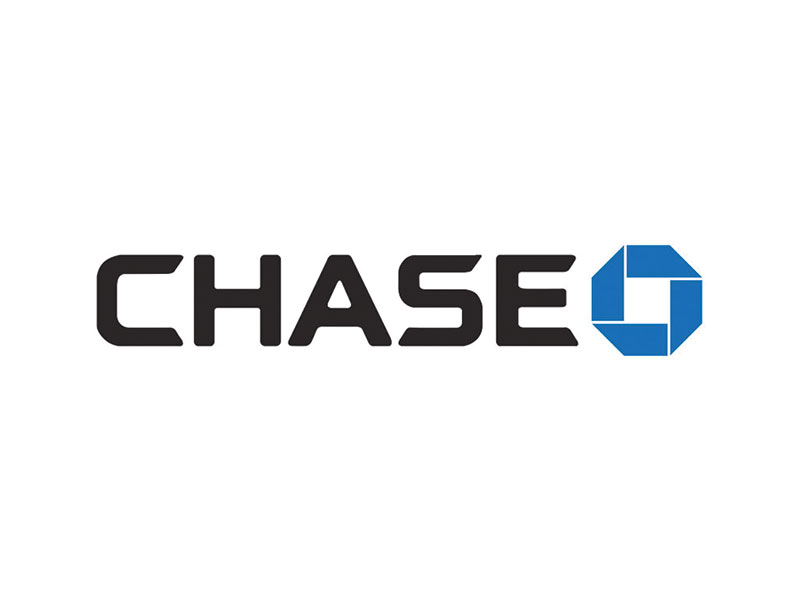11 Best Balance Transfer Credit Cards Of September 2025

Personal and small business cards issued by U.S. Bank and Bank of America are currently not available on CNBC Select and links have been redirected to our credit card marketplace where you can review offers from other issuers like American Express or Chase. You can also check out our list of best credit cards for alternative options.
Credit cards have notoriously high interest rates, so carrying a balance can be costly. However, some cards offer a path to paying off debt quicker with an introductory 0% APR period. These cards offer no interest for up to 24 months, which can more than offset any balance transfer fees.
Below, CNBC Select reviews the best balance transfer cards and we share what you need to know about using a balance transfer card. See our methodology for information on how we chose these cards.
Best with 0% intro APR for 24 months
U.S. Bank Shield Visa Card
- Best-in-class intro-APR offers for purchases and balance transfers
- No annual fee
- Annual statement credit
- Cell phone protection
- Rewards limited to eligible travel purchases made through the U.S. Bank Rewards Center
- No welcome bonus
- Has a foreign transaction fee
- No intro balance transfer fee
Information about personal and small business credit cards issued by U.S. Bank has been collected independently by CNBC Select and has not been reviewed or provided by the issuer prior to publication.
Who’s this for? The U.S. Bank Shield™ Visa® Card stands alone with its exceptionally generous intro-APR offer. If you want to save on credit card interest, this is the first card to look at.
Balance transfer offer: For a limited time, you’ll receive a 0% intro APR on balance transfers for 24 billing cycles, then a variable 17.74% to 28.74% APR applies. To qualify for the intro-APR, you must transfer the balance within 60 days of account opening. There is a balance transfer fee of 5% of the amount of each transfer ($5 minimum).
[ Jump to more details ]
Best with 0% intro APR for 21 months
Citi Simplicity Card
The Citi Simplicity® Card may not earn rewards, but it can still save you money due to its amazing intro-APR offers.
- One of the longest intro-APR offers for balance transfers
- No annual fee
- No rewards
- No welcome bonus
Who’s this for? The Citi Simplicity® Card has a generous intro APR period for balance transfers and a lower balance transfer fee than other options.
Balance transfer offer: When you transfer a balance to the Citi Simplicity Card from date of account opening, you’ll receive an intro 0% APR on that balance for 21 months. Then a variable 18.24% to 28.99% APR applies. An intro balance transfer fee of 3% of the amount you transfer ($5 minimum) applies to transfers you make in the first four months, after that a fee of 5% of the amount you transfer applies ($5 minimum). The intro fee is lower than the balance transfer fee for some cards with a similar 0% APR timeframe.
[ Jump to more details ]
Wells Fargo Reflect Card
The Wells Fargo Reflect® Card can help you save on interest charges thanks to its extra generous intro-APR offer on purchases and balance transfers.
- Best-in-class intro-APR for purchases and qualifying balance transfers
- No annual fee
- Cell phone insurance: up to $600 of cell phone protection against damage or theft. Subject to a $25 deductible
- No rewards
- No welcome bonus
- High balance transfer fee
Highlights
Highlights shown here are provided by the issuer and have not been reviewed by CNBC Select’s editorial staff.
- Select Learn More to take advantage of this offer and learn more about product features, terms and conditions.
- 0% intro APR for 21 months from account opening on purchases and qualifying balance transfers. 17.24%, 23.74%, or 28.99% Variable APR thereafter; balance transfers made within 120 days qualify for the intro rate, BT fee of 5%, min $5.
- $0 Annual Fee.
- Up to $600 of cell phone protection against damage or theft. Subject to a $25 deductible.
- Through My Wells Fargo Deals, you can get access to personalized deals from a variety of merchants. It’s an easy way to earn cash back as an account credit when you shop, dine, or enjoy an experience simply by using an eligible Wells Fargo credit card.
Balance transfer fee
Foreign transaction fee
Who’s this for? The Wells Fargo Reflect® Card has one of the longest introductory 0% APR periods for purchases and balance transfers.
Balance transfer offer: Balance transfers you make within 120 days of account opening qualify for a 0% intro APR for 21 months, after that a variable 17.24%, 23.74% or 28.99% APR applies. The balance transfer fee is 5% of each transfer with a $5 minimum.
[ Jump to more details ]
Citi Diamond Preferred Card
The Citi® Diamond Preferred® Card is one of the best balance transfer credit cards and also has a generous intro APR offer.
- One of the longest intro-APR offers for balance transfers
- No annual fee
- No rewards
- No welcome bonus
Highlights
Highlights shown here are provided by the issuer and have not been reviewed by CNBC Select’s editorial staff.
- 0% Intro APR on balance transfers for 21 months and on purchases for 12 months from date of account opening. After that the variable APR will be 17.24% – 27.99%, based on your creditworthiness. Balance transfers must be completed within 4 months of account opening.
- There is a balance transfer fee of either $5 or 5% of the amount of each transfer, whichever is greater
- Get free access to your FICO® Score online.
- With Citi Entertainment®, get special access to purchase tickets to thousands of events, including concerts, sporting events, dining experiences and more.
- No Annual Fee – our low intro rates and all the benefits don’t come with a yearly charge.
Balance transfer fee
Balance transfer fee applies with this offer 5% of each balance transfer; $5 minimum
Foreign transaction fee
Who’s this for? The Citi® Diamond Preferred® Card is a great option for those with good or excellent credit seeking a long introductory APR period.
Balance transfer offer: You’ll get 0% intro APR for 21 months on balance transfers from date of account opening (17.24% to 27.99% variable APR afterward). Balance transfers must be completed within four months of account opening and there is a balance transfer fee of either $5 or 5% of the amount of each transfer, whichever is greater.
[ Jump to more details ]
Best with 0% intro APR for 18 months
Citi Double Cash Card
The Citi Double Cash® Card is one of the best no-annual-fee cash-back cards thanks to its straightforward rewards structure.
- Long intro-APR for balance transfers
- High flat-rate cash-back rewards structure
- No annual fee
- Has a foreign transaction fee
- Intro APR doesn’t apply to purchases
Highlights
Highlights shown here are provided by the issuer and have not been reviewed by CNBC Select’s editorial staff.
- Earn $200 cash back after you spend $1,500 on purchases in the first 6 months of account opening. This bonus offer will be fulfilled as 20,000 ThankYou® Points, which can be redeemed for $200 cash back.
- Earn 2% on every purchase with unlimited 1% cash back when you buy, plus an additional 1% as you pay for those purchases. To earn cash back, pay at least the minimum due on time. Plus, earn 5% total cash back on hotel, car rentals and attractions booked with Citi Travel.
- Balance Transfer Only Offer: 0% intro APR on Balance Transfers for 18 months. After that, the variable APR will be 18.24% – 28.24%, based on your creditworthiness.
- Balance Transfers do not earn cash back. Intro APR does not apply to purchases.
- If you transfer a balance, interest will be charged on your purchases unless you pay your entire balance (including balance transfers) by the due date each month.
- There is an intro balance transfer fee of 3% of each transfer (minimum $5) completed within the first 4 months of account opening. After that, your fee will be 5% of each transfer (minimum $5).
Balance transfer fee
There is an intro balance transfer fee of 3% of each transfer (minimum $5) completed within the first 4 months of account opening. A balance transfer fee of 5% of each transfer ($5 minimum) applies if completed after 4 months of account opening.
Foreign transaction fee
Who’s this for? The Citi Double Cash® Card is one of the best cash-back cards, on top of featuring a generous balance transfer offer.
Balance transfer offer: With the Citi Double Cash Card, you can enjoy a 0% intro APR for the first 18 months on balance transfers you complete in the first four months of account opening. After the intro APR expires, a variable 18.24% to 28.24% APR applies. There’s an intro balance transfer fee of 3% of each transfer ($5 minimum) within the first four months, then the balance transfer fee increases to 5% of any amount you transfer ($5 minimum).
[ Jump to more details ]
Chase Slate Edge
The Chase Slate Edge℠ is a great intro-APR card if you want to save on interest, but it doesn’t earn rewards.
- Long intro APR for purchases and balance transfers
- No annual fee
- No rewards
- Has a foreign transaction fee
Balance transfer fee
Intro fee of either $5 or 3% of the amount of each transfer, whichever is greater, on transfers made within 60 days of account opening. After that, either $5 or 5% of the amount of each transfer, whichever is greater.
Foreign transaction fee
3% of the amount of each transaction in U.S. dollars
Who’s this for? The Chase Slate Edge℠ offers introductory 0% APR timeframes for balance transfers and purchases.
Balance transfer offer: With the Chase Slate Edge, you’ll receive an intro 0% APR for 18 months on eligible balance transfers, then a variable 18.99% to 28.99% APR applies. An intro balance transfer fee of 3% of the amount transferred ($5 minimum) applies to transfers you make in the first 60 days. After that, the balance transfer fee is 5% of the amount transferred ($5 minimum).
[ Jump to more details ]
Pro tip: You can pair this card with a Chase bank account
Offers in this section are from affiliate partners and selected based on a combination of engagement, product relevance, compensation, and consistent availability.

With over 4,700 branches, Chase has the largest branch network in the U.S. plus access to more than 15,000 ATMs.
BankAmericard credit card
- One of the longest 0% intro APR periods
- 3% foreign transaction fee
- No rewards program
Information about Bank of America cards has been collected independently by CNBC Select and has not been reviewed or provided by the issuer prior to publication.
Who’s this for? The BankAmericard® credit card offers a generous intro APR for purchases and balance transfers, plus it has a reasonable balance transfer fee.
Balance transfer offer: You’ll receive a 0% intro APR for 18 months for purchases and qualifying balance transfers. Balance transfers must be completed in the first 60 days from account opening to qualify for the intro APR. Once the intro APR expires, the standard variable APR of 15.24% to 25.24% applies. There is an intro balance transfer fee of 3% of each transaction for the first 60 days, then the transfer fee increases to 4% of each transaction.
[ Jump to more details ]
Best with 0% intro APR for 15 months
Chase Freedom Unlimited
The Chase Freedom Unlimited® is a no-annual-fee card that earns generous cash-back on everyday purchases and a lucrative welcome bonus.
- Valuable welcome bonus and high rewards rates
- Long intro APR for purchases and balance transfers
- No annual fee
- Has a foreign transaction fee
- Few rewarding ongoing benefits
Highlights
- Intro Offer: Earn a $200 Bonus after you spend $500 on purchases in your first 3 months from account opening
- Enjoy 5% cash back on travel purchased through Chase TravelSM, our premier rewards program that lets you redeem rewards for cash back, travel, gift cards and more; 3% cash back on drugstore purchases and dining at restaurants, including takeout and eligible delivery service, and 1.5% on all other purchases.
- No minimum to redeem for cash back. You can choose to receive a statement credit or direct deposit into most U.S. checking and savings accounts. Cash Back rewards do not expire as long as your account is open!
- Enjoy 0% Intro APR for 15 months from account opening on purchases and balance transfers, then a variable APR of 18.99% – 28.49%.
- No annual fee – You won’t have to pay an annual fee for all the great features that come with your Freedom Unlimited® card
- Keep tabs on your credit health, Chase Credit Journey helps you monitor your credit with free access to your latest score, alerts, and more.
- Member FDIC
Balance transfer fee
Intro fee of either $5 or 3% of the amount of each transfer, whichever is greater, in the first 60 days. After that, either $5 or 5% of the amount of each transfer, whichever is greater.
Foreign transaction fee
3% of each transaction in U.S. dollars
Who’s this for? The Chase Freedom Unlimited® is an excellent cash-back card to consider if you want to earn rewards while paying down your credit card debt.
Balance transfer offer: Chase Freedom Unlimited® cardmembers can transfer balances and receive an intro 0% APR for the first 15 months, then a variable 18.99% to 28.49% APR applies. An intro balance transfer fee of 3% of the amount you transfer ($5 minimum) applies for the first 60 days. After that, the balance transfer fee increases to 5% of the amount you transfer ($5 minimum).
[ Jump to more details ]
Blue Cash Everyday Card from American Express
The Blue Cash Everyday® Card from American Express has no annual fee and earns bonus rewards on a wide range of common expenditures.
- Up to $264 in streaming service and meal kit credits every year (subject to auto renewal)
- High cash-back rates in popular spending categories
- No annual fee
- The best bonus cash-back categories are capped
- Has a foreign transaction fee
Highlights
Highlights shown here are provided by the issuer and have not been reviewed by CNBC Select’s editorial staff.
- Earn a $200 statement credit after you spend $2,000 in purchases on your new Card within the first 6 months.
- No Annual Fee.
- Enjoy 0% intro APR on purchases and balance transfers for 15 months from the date of account opening. After that, 20.24% to 29.24% variable APR.
- Plan It®: Buy now, pay later with Plan It. Split purchases of $100 or more into equal monthly installments with a fixed fee so you don’t have the pressure of paying all at once. Simply select the purchase in your online account or the American Express® App to see your plan options. Plus, you’ll still earn rewards on purchases the way you usually do.
- Earn 3% cash back at U.S. supermarkets, 3% cash back on U.S. online retail purchases, 3% cash back at U.S. gas stations, on eligible purchases for each category on up to $6,000 per year in purchases (then 1%). Cash back is received in the form of Reward Dollars that can be redeemed as a statement credit and at Amazon.com checkout.
- Get up to a $7 monthly statement credit after using your enrolled Blue Cash Everyday® Card for a subscription purchase, including a bundle subscription purchase, at Disneyplus.com, Hulu.com, or Plus.espn.com U.S. websites. Subject to auto-renewal.
- Apply with confidence. Know if you’re approved for a Card with no impact to your credit score. If you’re approved and you choose to accept this Card, your credit score may be impacted.
- Terms Apply.
- See Rates & Fees
Balance transfer fee
Either $5 or 3% of the amount of each transfer, whichever is greater.
Foreign transaction fee
2.7% of each transaction after conversion to US dollars
Balance transfer offer: This card has an introductory 0% APR for 15 months on purchases and balance transfers from the date of account opening, then 20.24% to 29.24% variable. There’s a balance transfer fee that’s either $5 or 3% of the amount of each transfer (whichever is greater), and transfers must be requested within 60 days of account opening.
[ Jump to more details ]
Capital One Quicksilver Cash Rewards Credit Card
The Capital One Quicksilver Cash Rewards Credit Card has no annual fee, cash-back rewards and a generous intro-APR offer, which make it a great option for saving on interest while earning rewards.
- No annual fee
- Low spending requirement for the welcome bonus
- Redeem cash back for any amount at any time
- No foreign transaction fee
- 3% balance transfer fee during the first 15 months your account is open
- No bonus rewards categories
Highlights
Highlights shown here are provided by the issuer and have not been reviewed by CNBC Select’s editorial staff.
- For a limited time, enjoy a $100 credit to use towards flights, stays and rental cars booked through Capital One Travel during your first cardholder year. Plus, earn a $200 cash bonus once you spend $500 on purchases within the first 3 months from account opening
- Earn unlimited 1.5% cash back on every purchase, every day
- $0 annual fee and no foreign transaction fees
- Earn unlimited 5% cash back on hotels, vacation rentals and rental cars booked through Capital One Travel
- No rotating categories or sign-ups needed to earn cash rewards; plus, cash back won’t expire for the life of the account and there’s no limit to how much you can earn
- 0% intro APR on purchases and balance transfers for 15 months; 19.24% – 29.24% variable APR after that; balance transfer fee applies
Balance transfer fee
- 3% for the first 15 months; 4% at a promotional APR that Capital One may offer you at any other time
Who’s this for? The Capital One Quicksilver Cash Rewards Credit Card is a great fit if you’re looking to transfer a balance and want a solid return on everyday purchases.
Balance transfer offer: You’ll get an intro 0% APR on balance transfers for 15 months with the Capital One Quicksilver Credit Card. After the intro-APR offer ends, the standard variable APR of 19.24% to 29.24% applies. There is an intro balance transfer fee of 3% of each transfer you complete in the first 15 months from account opening. After that, there is a balance transfer fee of 4% of the amount you transfer at a promotional APR that Capital One may offer you at any other time.
[ Jump to more details ]
Chase Freedom Flex
The Chase Freedom Flex® is an excellent cash-back card for maximizing your spending in a variety of categories.
- Long intro APR for purchases and balance transfers
- Rewarding quarterly bonus categories
- No annual fee
- Bonus categories are capped each quarter
- Has a foreign transaction fee
Rewards
- 5% cash back on up to $1,500 in combined purchases in bonus categories each quarter you activate (then 1%)
- 5% cash back on travel booked through Chase Travel℠
- 3% on drugstore purchases and on dining (including takeout and eligible delivery services)
- 1% cash back on all other purchases
Balance transfer fee
Intro fee of either $5 or 3% of the amount of each transfer, whichever is greater, on transfers made within 60 days of account opening. After that, either $5 or 5% of the amount of each transfer, whichever is greater.
Foreign transaction fee
Who’s this for? The Chase Freedom Flex® offers a high return in rotating bonus categories to go along with its intro 0% APR offer.
Balance transfer offer: Chase Freedom Flex card holders can transfer balances and take advantage of an intro 0% APR for 15 months, then a variable 18.99% to 28.49% APR applies. This card’s intro balance transfer fee is 3% of the amount you transfer ($5 minimum) within the first 60 days of account opening. Afterward, the balance transfer fee is 5% of the amount you transfer ($5 minimum).
[ Jump to more details ]
Find the best credit card for you by reviewing offers in our credit card marketplace or get personalized offers via CardMatch™.
Compare savings accounts
More on our top balance transfer cards
Best balance transfer credit cards comparison
| Credit Card | Balance transfer intro APR length | Rewards | Welcome bonus |
|---|---|---|---|
| U.S. Bank Shield™ Visa® Card | 24 billing cycles | Yes, cash back on limited purchases | No |
| Wells Fargo Reflect® Card | 21 months | None | No |
| Citi Simplicity® Card | 21 months | None | No |
| Citi® Diamond Preferred® Card | 21 months | None | No |
| Citi Double Cash® Card | 18 months | Yes, cash back | Yes |
| Chase Slate Edge℠ | 18 months | None | No |
| BankAmericard® credit card | 18 statement closing dates | None | No |
| Chase Freedom Unlimited® | 15 months | Yes, cash back | Yes |
| Chase Freedom Flex® | 15 months | Yes, cash back | Yes |
| Blue Cash Everyday® Card from American Express | 15 months | Yes, in the form of Reward Dollars | Yes |
| Capital One Quicksilver Cash Rewards Credit Card | 15 months | Yes, cash back | Yes |
U.S. Bank Shield Visa Card
Rewards
- 4% cash back on prepaid air, hotel and rental car reservations booked through the U.S. Bank Rewards Center
Welcome bonus
None
Annual fee
$0
Notable benefits
After you make purchases for 11 consecutive months with your U.S. Bank Shield™ Visa® Card, you’ll earn a $20 statement credit.
You can also qualify for cell phone protection for theft and damage when you pay your monthly wireless phone bill with this card. This insurance provides up to $600 in reimbursement per claim with a $100 deductible (maximum one claim every 12 months).
[ Return to card summary ]
Citi Simplicity Card
Wells Fargo Reflect Card
Citi Diamond Preferred Card
Citi Double Cash Card
Rewards
- 2% on every purchase with unlimited 1% cash back when you buy, plus an additional 1% as you pay for those purchases. To earn cash back, pay at least the minimum due on time
- Earn 5% total cash back on hotel, car rentals and attractions booked with Citi Travel
Welcome bonus
Earn a $200 bonus after spending $1,500 on purchases in the first six months of account opening
Annual fee
$0
Notable benefits
[ Return to card summary ]
Chase Slate Edge
Rewards
None
Welcome bonus
None
Annual fee
$0
Notable benefits
You can receive six complimentary months of DoorDash DashPass membership when you enroll by Dec. 31, 2027 (after, you’ll be auto-enrolled at the full price). Once per quarter, you’ll receive a $10 discount on a non-restaurant DoorDash order.
[ Return to card summary ]
BankAmericard credit card
Chase Freedom Unlimited
Rewards
- 5% back on travel purchased through Chase TravelSM
- 3% back at drugstores
- 3% back on dining at restaurants (including takeout and eligible delivery services)
- 1.5% on all other purchases
Welcome bonus
Earn a $200 Bonus after you spend $500 on purchases in your first 3 months from account opening
Annual fee
$0
Notable benefits
The Chase Freedom Unlimited® offers an intro APR on purchases and eligible purchases qualify for extended warranty protection, purchase protection and trip cancellation/interruption insurance.
You also get six months of complimentary DashPass when you activate by Dec. 31, 2027 (after the six months you’ll be auto-enrolled at the full price). You also receive a $10 discount on a non-restaurant DoorDash order once per quarter.
[ Return to card summary ]
Blue Cash Everyday Card from American Express
Rewards
- 3% cash back at U.S. supermarkets on up to $6,000 per year in purchases, then 1%
- 3% cash back on U.S. online retail purchases, on up to $6,000 per year, then 1%
- 3% cash back at U.S. gas stations, on up to $6,000 per year, then 1%
- 1% cash back on other purchases
Welcome bonus
Earn a $200 statement credit after you spend $2,000 in purchases on your new Card within the first six months
Annual fee
$0
Notable perks
[ Return to card summary ]
Capital One Quicksilver Cash Rewards Credit Card
Rewards
- Earn unlimited 5% cash back on hotels, vacation rentals and rental cars booked through Capital One Travel
- 1.5% cash back on every purchase
Welcome bonus
For a limited time, enjoy a $100 credit to use towards flights, stays and rental cars booked through Capital One Travel during your first cardholder year. Plus, earn a $200 cash bonus once you spend $500 on purchases within the first 3 months from account opening
Annual fee
$0
Notable benefits
On top of the balance transfer offer, you’ll also receive an intro APR on purchases with the Capital One Quicksilver Cash Rewards Credit Card.
Through Capital One Dining and Capital One Entertainment, you’ll get access to pre-sales and exclusive events and experiences with this card. You’re also able to book travel through the Capital One Travel site, which provides certain benefits, such as price drop protection and a price match guarantee.
[ Return to card summary ]
Chase Freedom Flex
Rewards
- 5% cash back on up to $1,500 in combined purchases in bonus categories each quarter (activation required)
- Earn 5% cash back on travel purchased through the Chase TravelSM portal
- Earn 3% cash back on dining at restaurants, including takeout and eligible delivery services
- Earn 3% cash back at drugstores
- Earn 1% cash back on all other purchases
Welcome bonus
Earn a $200 bonus after you spend $500 on purchases in the first three months from account opening
Annual fee
$0
Notable benefits
The Chase Freedom Flex® provides an introductory APR on purchases. You can also save on delivery fees with six months of complimentary DashPass when you activate by Dec. 31, 2027 (after the six months you’ll be auto-enrolled at the full price). You can also take advantage of a quarterly $10 discount on a non-restaurant DoorDash order.
This card also has insurance benefits, such as cell phone protection, purchase protection, extended warranty protection and trip cancellation/interruption coverage.
[ Return to card summary ]
What is a balance transfer credit card?
Completing a balance transfer is usually fairly easy. Sometimes you can even transfer a balance when you apply for the card. Regardless of when you complete a transfer, you will also normally pay a balance transfer fee of 3% to 5% of the amount you transfer.
Another tradeoff is that the cards with the longest intro-APR periods tend not to be as rewarding as the top rewards credit cards. So if you want a card with an exceptionally long intro-APR, you probably won’t earn as many rewards.
How to use a balance transfer card
Using your card’s balance transfer offer is fairly straightforward. You can usually opt to transfer balances as part of your application or transfer balances once you have your card. However, there are a few things to remember before taking advantage of a balance transfer offer.
Pay attention to fees
Most balance transfer cards charge a balance transfer fee. The fee is usually 3% to 5% of the amount you transfer. For example, transferring $5,000 with a 3% fee will cost you $150. This fee is charged to the balance transfer card, rather than the original card.
These fees can quickly add up and you should factor in this cost when determining if it makes sense to get a balance transfer card.
Know the restrictions
There are a few limitations to be aware of before you apply for a credit card with a balance transfer offer.
The first thing to know is that you can’t make transfers between cards from the same bank. For example, if you have a Chase credit card, you can’t transfer debt to another Chase card. So you’ll need to apply for a card from a different bank than the one you want to transfer debt from.
Also, you may have a limited time to complete your transfers. If you wait too long to make a transfer, you may miss the 0% APR period or the intro balance transfer fee.
You’ll also want to be aware of any limits on the amount of debt you can transfer. Card issuers typically cap the amount you can transfer to a percentage of your credit limit or a specific dollar amount. Issuers may also factor the balance transfer fees into this limit.
See if you qualify for the card
Balance transfer cards usually require good or excellent credit. Qualifying for a balance transfer card can be difficult if you have subpar credit.
How to choose a balance transfer credit card
Using a balance transfer credit card to consolidate and pay off credit card debt is a great strategy to save on interest charges. However, it also needs to be paired with an overall strategy for paying down your debt.
As you consider what type of balance transfer card makes the most sense for you, you’ll want to do the math to weigh the costs and benefits. Balance transfer cards can earn rewards or even offer upfront bonuses, but the cards with the best intro-APR periods, typically don’t offer rewards. However, the money you save on interest can easily offset any rewards you miss.
Calculate how much you’ll save
The bigger the balance you want to transfer and the longer the zero-interest period, the more you save. Looking at what you’ll save is not always as simple as looking at your current credit card balance and interest rate.
One caveat to consider is how much of your balance you may be able to transfer to a 0%-APR card. If you have a large amount of credit card debt, an intro-APR offer can be quite valuable. However, the benefit is limited by your balance transfer card’s credit limit and any transfer limits imposed by the card issuer.
Know all the costs
Using a balance transfer offer can save you money, but it’s not free, so you need to be sure the benefits outweigh the costs.
Most top balance transfer cards have no annual fee, but it’s something you want to look at before applying. Assuming the card you’re applying for doesn’t have an annual fee, you want to pay attention to the card’s balance transfer fee. These fees generally run 3% to 5% of the amount you transfer and can easily add up to hundreds of dollars when transferring a significant balance.
Pros and cons of a balance transfer card
Pros of a balance transfer card
- Pay off debt: A balance transfer card can help you pay off your credit card balance more quickly because you won’t pay interest during the intro-APR period.
- Build credit: A balance transfer card may help you improve your credit score by reducing your debt and lowering your credit utilization ratio.
Cons of a balance transfer card
- Fees: The majority of balance transfer credit cards have a balance transfer fee of 3% to 5%, which eats into your savings.
- Tougher approval odds: You typically need a higher credit score to qualify for a balance transfer card.
Alternatives to balance transfer credit cards
As valuable as balance transfer credit card offers can be, it’s not an option for everyone. You generally need a high credit score to have the best chance of being approved for these cards. Depending on your debt, you may only be able to transfer a portion of it.
If you aren’t eligible for a balance transfer card or opening a credit card isn’t the right option for you, here are two alternatives to consider.
Debt consolidation loan
A debt consolidation loan is an unsecured personal loan you take out to pay off your existing debts and roll separate payments into a single loan. Depending on your credit score, you may be able to secure a lower interest rate. You could also opt for a loan with a longer repayment term, reducing your monthly payment and adding flexibility to your budget. However, if you take out a longer loan, you can end up paying more interest over the long haul because you’ll spend less toward the principal each month.
These types of loans can make sense if your credit score has been improving and you can qualify for a better rate.
Borrow against your home equity
If you own a home worth more than you owe, you may be able to borrow against your home at a lower interest rate than credit cards and unsecured personal loans. If you’re in this situation, several different financial products are available, including home equity loans, home equity lines of credit (HELOC) and cash-out refinance mortgages.
Home equity loans and HELOCs are both types of second mortgages. That means you keep your original loan and take out an additional loan backed by your home. This option makes most sense if your current mortgage rate is lower than the rate you would qualify for if you took out a mortgage today.
With a cash-out refinance, you are replacing your existing mortgage with a new, larger loan. If today’s mortgage rates are lower than your current rate, you’ll be able to lock in a better rate and get cash back. With a cash-out refi, you can typically borrow up to 80% of your home’s value and there are upfront closing costs that can range from 2% to 6% of the loan amount.
This is a unique strategy that isn’t for everyone, and you have to remember that you are borrowing against your home. If you’re unable to make on-time payments, your lender could force you into foreclosure.
Compare personal loans
FAQs
What is the difference between a money transfer and a balance transfer?
Money transfers and balance transfers are not the same. A money transfer is when you move funds from one account to another, at the same bank or between accounts at different financial institutions. A balance transfer is when you move debt from one credit card to another.
Do banks do balance transfers?
Banks only allow balance transfers between credit card accounts. And banks will not allow you to transfer balances between two cards issued by the same bank. If you want to do a balance transfer, you’ll need to open a new credit card with a different card issuer.
Do balance transfers always work?
Whether a balance transfer works out depends on your goal. If you want to pay less interest and pay off your debt faster, that will need to be your focus during the promotional APR period. But if you continue to grow your credit card balance, the balance transfer may not have helped your situation as much as it could have.
Do balance transfers hurt your credit?
Is it worth getting a balance transfer?
Balance transfers are good options for consolidating credit card debt. However, be sure to calculate the cost of transferring the balance versus the interest fees you’ll accrue by simply paying down the balance on your current credit card.
How do you qualify for a balance transfer?
Balance transfer credit cards are typically for consumers with good to excellent credit scores. If you’re approved for a balance transfer offer, you’ll want to take advantage of it quickly as they are limited-time offers.
Can you transfer a balance multiple times?
Yes, you can typically transfer a balance more than once, but this strategy is often not recommended. You’re not paying down your debt, and it will continue to grow larger, eating into your available credit and costing you in interest payments.
Why trust CNBC Select?
Subscribe to the CNBC Select Newsletter!
Money matters — so make the most of it. Get expert tips, strategies, news and everything else you need to maximize your money, right to your inbox. Sign up here.
Our methodology
To determine which cards have the best value for 0% APR balance transfer offers, CNBC Select analyzed over 250 major credit cards issued through FDIC-insured banks and NCUA-insured credit unions that are widely available in the U.S.
We compared each card on a range of features, including rewards (e.g., cash back, points and miles), annual fees, welcome bonuses, introductory and standard APR and balance transfer fees and foreign transaction fees. We also considered additional perks (e.g., ongoing travel or merchant statement credits), cardholder protections (e.g., purchase protection, $0 liability protection and travel insurance), the application process when available (e.g., is there a credit pull or required credit score) and how easy it is to redeem points (e.g., are rewards are tied to a specific brand; if transferable, to how many/which partners, can you redeem for straight cash back).
We also considered CNBC Select audience data when available, such as general demographics and engagement with our content and tools.
For the cards that offered a rewards program, we considered consumer spending data forecasts from location intelligence firm Esri to determine where U.S. consumers are spending the most money, like on dining and travel. We used this to help determine what bonus categories are most useful for consumers. Since the value of a point or mile varies based on what they can be redeemed for, we also considered things like transferability and the ability to redeem for cash-back.
When choosing the best 0%-intro-APR balance transfer credit cards, we focused on cards that offer longer intro-APR periods. We also placed a special emphasis on balance transfer fees and whether the cards offered intro APRs for purchases, balance transfers or both.
Catch up on CNBC Select’s in-depth coverage of credit cards, banking and money, and follow us on TikTok, Facebook, Instagram and Twitter to stay up to date.
For rates and fees of the Blue Cash Everyday® Card from American Express, click here.
Editorial Note: Opinions, analyses, reviews or recommendations expressed in this article are those of the Select editorial staff’s alone, and have not been reviewed, approved or otherwise endorsed by any third party.
<





